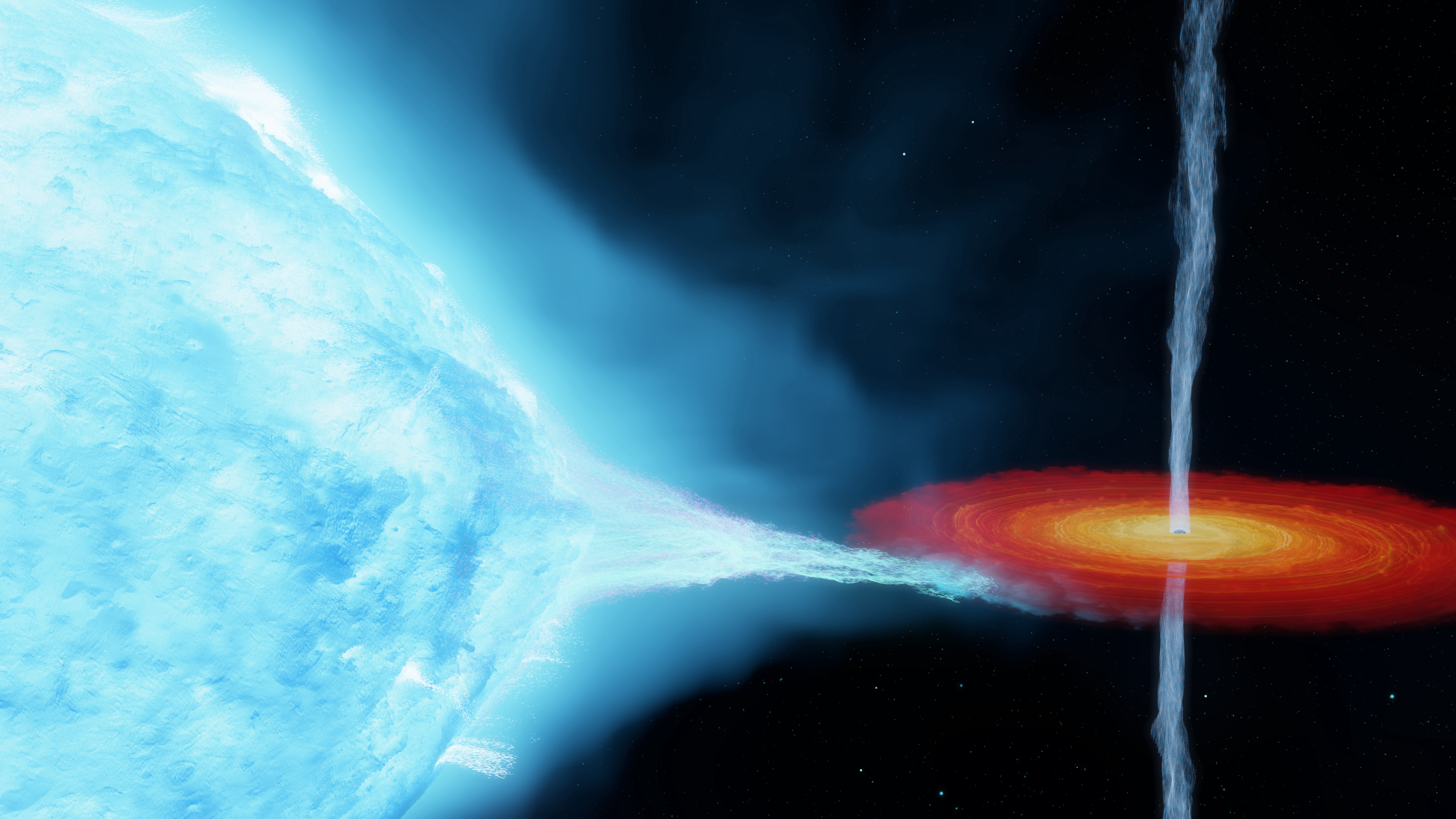Some black holes have a 'heartbeat' — and astronomers may finally know why
A tiny fraction of known black holes emit X-ray signals that resemble a human "heartbeat." Now, new research may finally explain the strange phenomenon.

Black holes aren't alive, but it turns out that they can have a heartbeat — if they're consuming enormous amounts of gas. And new research has discovered just how that heartbeat works.
When black holes exist in a binary system — sharing an orbit with another star — they can pull in gas from a stellar companion. When this happens, the gas compresses and heats up to incredibly high temperatures, emitting copious amounts of X-ray radiation in the process. It's through this process that astronomers first identified black holes with the famous case of Cygnus X-1, one of the brightest sources of X-rays in our sky.
In the midst of this feeding frenzy, which can last for thousands to even millions of years, there can occasionally be a tremendous outburst. This is a sudden flare of X-rays caused by the quick consumption of an enormous amount of material at once.
Astronomers have studied many such flares over the years, but detailed observations of these flares have occasionally revealed strange behavior. In addition to the overall flare, there is a little bit of variability, a regular pulse of activity embedded within the flare event. Astronomers call these pulses heartbeat flares, because their behavior resembles that of an EKG signal of a human heartbeat with a slow rise, a rapid decline, and then a return to normalcy.
A team of astronomers at the Key Laboratory of Particle Astrophysics at the Chinese Academy of Sciences in Beijing have studied the most recent heartbeat flare and described the process that may fuel it in a paper published to the preprint database arXiv. They submitted their work for publication in The Astrophysical Journal.
The flare they studied originated from IGR J17091-3624, a black hole sitting 28,000 light-years from Earth. Using X-ray data taken with the Neutron Star Interior Composition Explorer (NICER) and Nuclear Spectroscopic Telescope Array (NuSTAR) in 2022, the team found clear evidence of a heartbeat-like signal in the flare. By studying the detailed properties of the heartbeat, they concluded that these kinds of pulses are due to interactions and instabilities within the material surrounding the black hole.
As material falls into a black hole, it not only compresses, but it forms a thin, rapidly rotating disk. The inner edge of this disk slants down toward the event horizon of the black hole, while the remainder of the disk glows in X-ray radiation. This creates a highly unstable situation as radiation from the disk competes with the gravitational pull of the black hole.
Breaking space news, the latest updates on rocket launches, skywatching events and more!
To trigger a heartbeat, the disk temporarily fragments, losing its cohesion and sending a large clump of material down toward the black hole. This releases an enormous amount of radiation, which begins the heartbeat pulse. The radiation then heats up the gas, which temporarily prevents it from falling in. Then the gas settles down before the process repeats itself, setting the stage for another heartbeat.
These heartbeat signals are incredibly rare — only two black holes among the hundreds known have shown it — but researchers hope to study more, as they give valuable insights into the relationships between black holes and their environments.

Paul M. Sutter is a cosmologist at Johns Hopkins University, host of Ask a Spaceman, and author of How to Die in Space.

